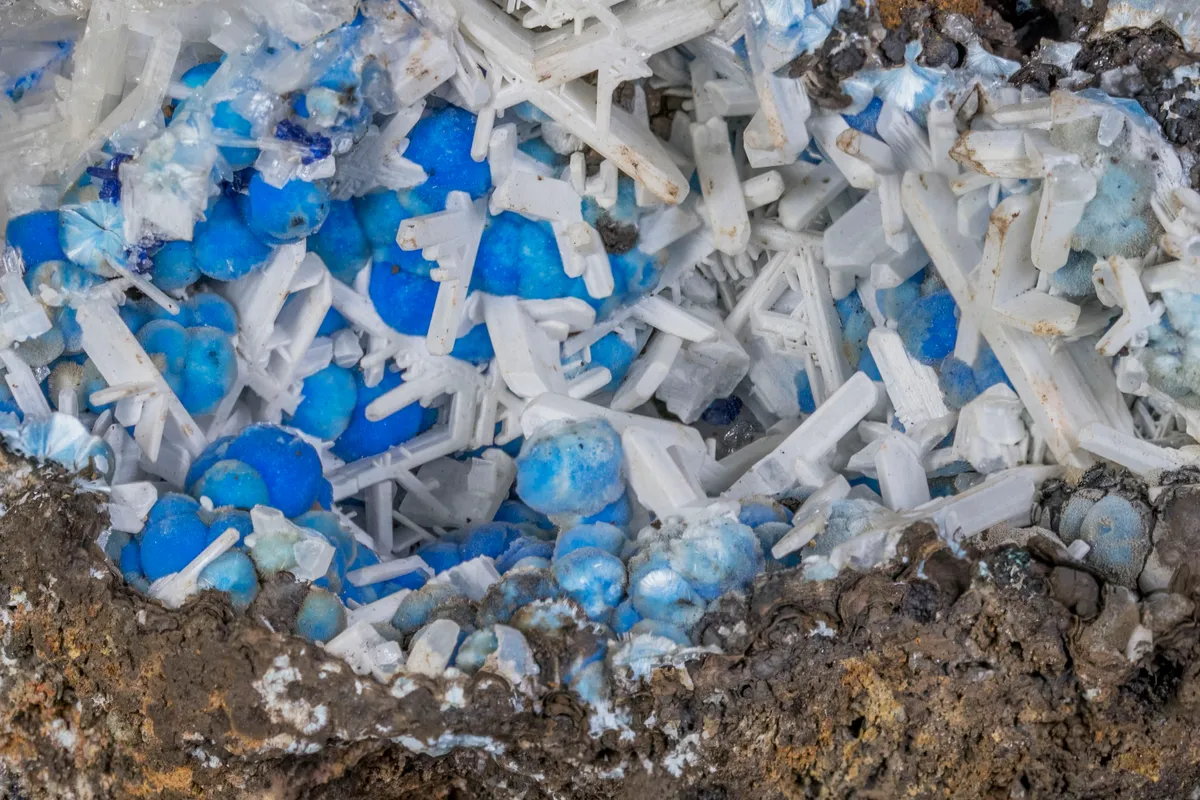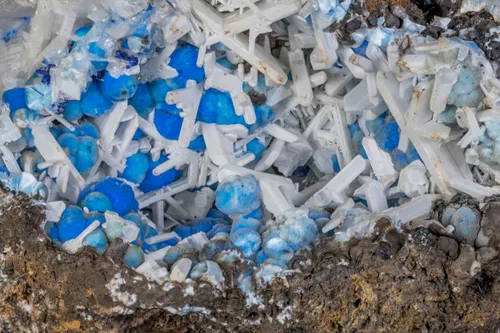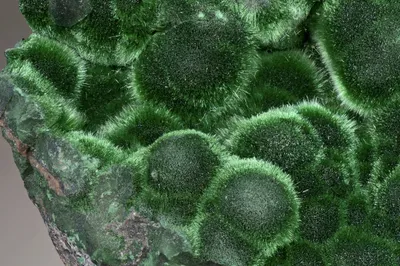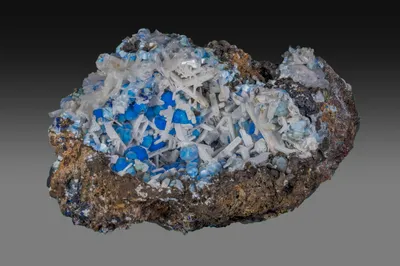
Image Credit: Malcolm Southwood
Mineral Species
Dundasite
Type Locality
No
Composition
PbAl2(CO3)2(OH)4·H2O
Crystal System
Orthorhombic
Status at Tsumeb
Confirmed
Abundance
Somewhat rare
Distribution
First and second oxidation zones
Paragenesis
Supergene
Entry Number
Species; TSNB112
General Notes
Dundasite occurs typically as silky-white fibres or as spherules of radiating acicular crystals, most commonly white but occasionally with a striking blue colour, the latter presumably due to the presence of copper.
Pinch and Wilson (1977) noted that the blue crystals give a slightly different X-ray pattern that may be indicative of "… a copper-rich variety or a new species."
Keller (1977a) placed dundasite in one of his "Type I" parageneses (i.e., mineral sequences forming under near neutral pH conditions):
I/7: duftite >> dundasite >> cerussite >> azurite >> malachite (ps. azurite).
Keller (1984) noted the occurrence of dundasite with smithsonite and cautioned that dundasite may be confused with acicular willemite or with the very rare mineral larsenite. Confusion with fleischerite or schaurteite might also be possible, although these minerals have very different parageneses.
The typical association with azurite suggests that dundasite may have been common in the first oxidation zone. However, Von Bezing et al. (2014) attributed dundasite primarily to the second oxidation zone.
A specimen in the Southwood Collection (MS 2011.135) comprises bright blue sub-spherical aggregates (to 4 mm) of radiating, acicular dundasite crystals (XRD verified). The aggregates are associated with loosely intergrown prismatic crystals of cerussite. Minor azurite is present on the specimen but not in the dundasite-bearing vug. The specimen has been figured by Hochleitner and Weiss (2017) and by Von Bezing et al. (2014).
Associated Minerals
anglesite; arsentsumebite; azurite; cerussite; dolomite; duftite; hydrocerussite; malachite; smithsonite



